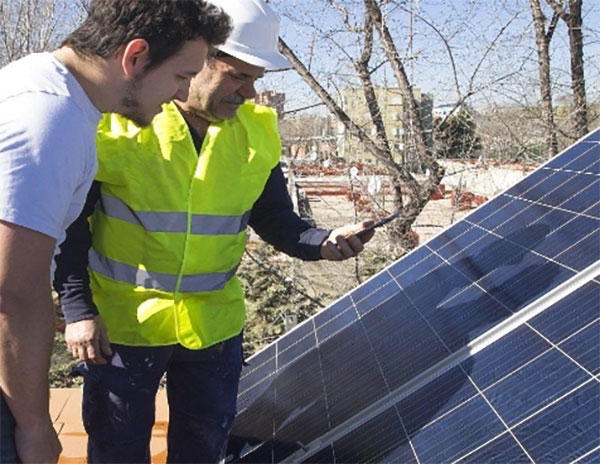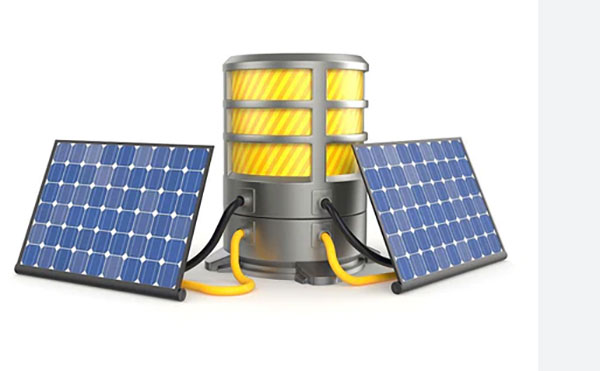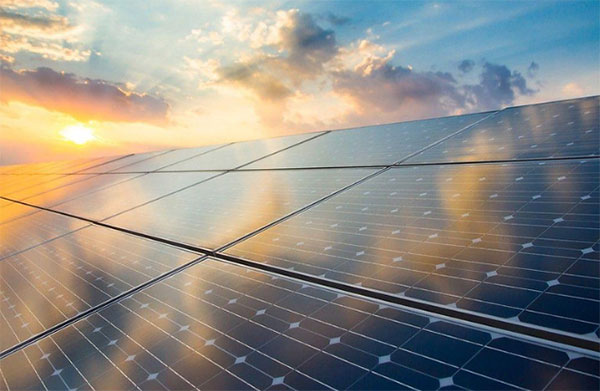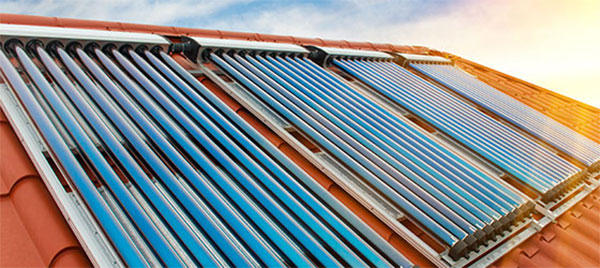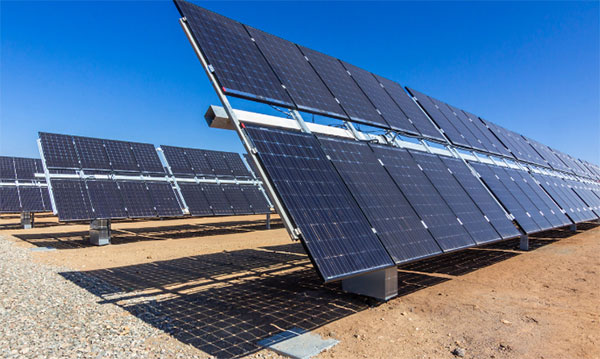Description
Yes, a solar panel can have voltage without current due to an open circuit, shading, or faulty components preventing electron flow.Explanation of solar panel operations
Solar panel is also known as PV cells, which is used to convert sunlight into energy. These devices are an essential technology for achieving solar power that is also one of the most widespread renewable energy sources. Solar panels carry out the conversion of sunlight into electricity through a process called the photovoltaic effect .
There is a considerable number of PV cells installed closely to one another on a panel usually made from silicon. The efficiency of solar panels ranges between 15% and 22% according on the type of technology.
The main materials used in the production of PV cells are monocrystalline and polycrystalline silicon where the former is a bit more efficient and, thus, more expensive. Mainly, the cost of solar panels has decreased during the last decade making solar energy more affordable .
The up-to-dated information shows the average cost of solar panels ranging from $0.20 up to $0.50 per watt . Standard residential solar panel systems range between 4 kW and 8 kW, which means the cost of $8,000 to $16,000 without any tax credits or incentives.
Definition of voltage
Voltage, also frequently called electric potential difference, is the amount of work that is necessary to transfer a single unit of electric charge between two distinct points. The potential difference of electric potential is usually termed voltage and represented with the abbreviation V as a general rule .
Explanation of voltage and current difference
Voltage is also usually relatively to V and is the result of electric potential difference between generated two points. Voltage represents electric forces that make charges or electrons move along a circuit. Meanwhile, current is accounted in amperes , which is the flow of electric charge adjusted on voltage.
Explanation of how solar panel generates electricity
When these electrons move from one conductor to another, electricity is generated. The number of electricity generated depends on solar panel size, cells, location, angle, and environmental conditions.
- Cells: More solar cells imply more generated electricity .
- Organizations. Charge efficiency has different ratios.
- Amount :Some quantities of sunlight are necessary 4 .
- Location: Direct sunlight that hits the panel generates more electricity.
- Environmental conditions: Solar cells are face reduced efficiency when it is hot. Additionally, any shadow, dirt, and dust affect the amount of electricity.
The Phenomenon of Voltage Without Current in Solar Panels
Servicing as a tool for turning sunlight into electricity, solar panels operate based on the principle of the photovoltaic effect – light exposure in an insulating material excites electrons, segregating them into different energy levels . Thus, the emergence of voltage in a solar panel seems quite logical, as photons stimulate electrons, pushing them into the next energy level. Once the photons have raised the energy of the electrons to a high enough level, the electrons will actively seek to move from one level to another.
However, to truly move and contribute to an electric current, the electrons should be allowed to do so through a circuit; if no external circuit is set, the electrons will simply move to a higher energy level and return upon the occurrence of the next photon. Hence, the phenomenon, in which a solar panel displays a tension yet has no current, usually points to its working in the circumstance of an “open circuit” .
Causes of Voltage Without Current
The causes of the above phenomenon can be classified into external ones, which often results in the temporary appearance of voltage whereas actual current remains extremely minimal, and internal ones, associated with technical malfunctions within the solar panel system.
Physical and Environmental Causes: Local exposure of different zones of the solar panel also results in only some of the areas producing the voltage . Similarly, during less sunny periods, such as dawn or twilight, some voltage might appear in the panel, with the current produced in such circumstances being often insignificant.
Technical and System Issues: The circuit could be open due to the damaged wiring, borderlineless connectors, or in non-functioning bypass diodes . Similarly, another possible preventer of current could be impedance mismatch of the devices.
Characteristics of the Solar Panel: Finally, the solar panel’s parameters shape how likely voltage without current is to occur; the higher the quality of the panel and the more relevant to the task of generating an appropriate amperage, the more improbable it is for this phenomenon to occur. The efficiency of a solar panel, in general, fluctuates within the range of 15%-22%; as such, it is possible that a panel close to the lower parameter may simply be uncapable of producing any current if the circumstances are less than optimal.
Diagnostic approaches for solar panels with voltage but no current
Tools and equipment
In order to effectively diagnose solar panels and troubleshoot their issues, especially when the panel has voltage but there is no current, the following set of tools and equipment is necessary:
-
Multimeter: a multimeter is a device that is critical for measuring voltage, current, and resistance. A good quality multimeter is necessary, but you do not need one with high precision and extreme features. A multimeter with a range sufficient enough to measure your solar panel with a good accuracy would cost about $30-$200.
-
Insulation resistance tester: this tool is used to determine if there are any leaks or faults in the insulation of cables. The cheaper models would cost you about $100, while the better ones could cost $500.
-
IR Camera: An IR camera can visualize “hot” spots on the panels to show you if something is wrong by indicating a problem. This type of device would have a huge range of prices: from $200 for the simplest models, to $2000 for a professional IR camera.
-
Clamp meter: a clamp meter, similar to a multimeter, is used for measuring the current without a need to disconnect the circuit. You could expect to pay $50 to $300 for a suitable meter.
Step-by-step procedure
-
Visual inspection: look at the solar panel, wiring, and connections and see if there are any visual damages such as frayed or damaged wires, burnt spots, broken or cracked panel, etc.
-
Voltage measurement: Use your multimeter to measure open-circuit voltage across the terminals of the solar panel. The voltage value should be close to the panel’s rated Voc , light Isc . Significant deviations could indicate shading issues or other problems with the solar panel.
-
Current measurement: set the meter to measure the short-circuit current. Ensuring that there is no load connected to the solar panel, measure the short-circuit current. The value should be close to the rated Isc . The deviation in accordance to the previous step could be critical and significant.
-
Measuring insulation resistance: Use the insulation resistance tester and check for leaks to ground. The low resistance value would indicate a leakage current and a possible problem.
-
Checking for hot spots: if you have an IR camera, use it to find any hot spots on the panels, as such places are high in resistance and may indicate cell failure. Note that the shading issues could also lead to such problems.
-
Connectivity testing: Using just a multimeter, check for continuity of the wiring between the panels and the load or inverter.
-
Bypass diode testing: If the panel has bypass diodes, you could make sure they are not the fault, as they could waste and steal all the current and prevent the flow.
Troubleshooting and Solutions for Solar Panels
Common Causes and Solutions
Open circuit in wiring or connections
Cause: Some of the wire strand or connection might have opened, leading to presence of voltage with no current flow.
Solution: Use a multi-meter to source out the open circuit location. Replace or connect the open circuit wire .Make sure the connections are tightened and that the wire is insulated.
Faulty bypass diodes
Cause: Bypass diodes protect the panel from hot spot heating and allow the current to go round the shaded or damaged part of the cell. A damaged or faulty diode will no allow the current to flow.
Solution: Test the diode using a multi-meter, check the forward bias side of the diode, using diode mode in the multi-meter. In most cases, the forward bias should give a 0.6V drop for silicon diode.
Partial shading
Cause: Only a small part of the solar panel formation to the cell can be slowed down leading to decrease in the current, since current in a solar panel is constant in the entire series circuit.
Solution: Change the place you had mounted the solar panel to another one where it cannot be shaded by other objects like trees or a building, trim the tree or install or mount the solar panel to another location.
Degradation or darkening of the solar cells
Cause: The solar cells are bound to be damaged by weather conditions or exposure to ultraviolet radiation; they gradually become darker.
Solution: Most solar panels come with a warranty, but if you notice that the panel has been damaged, seek warranty from the manufactures. Also buy a high quality panel with a good warranty and ensure that only certified professionals install the panel.
Preventive Measures And Best Practices
Regular checks
Ensure that the solar panel, connections and wires are perfectly setup, make sure the wire is clean and that the it is not covered with dust or snow. Also you have to clean the wires, solar panels and solar connections.
Proper installation and sizing
A given area require a specific setting and sizing, you therefore need a good installer.
High quality:Do not go for cheap materials, buy a solar panel with higher efficient from 15% to 22%(optimum efficiency), also buys a high quality solar panel.


